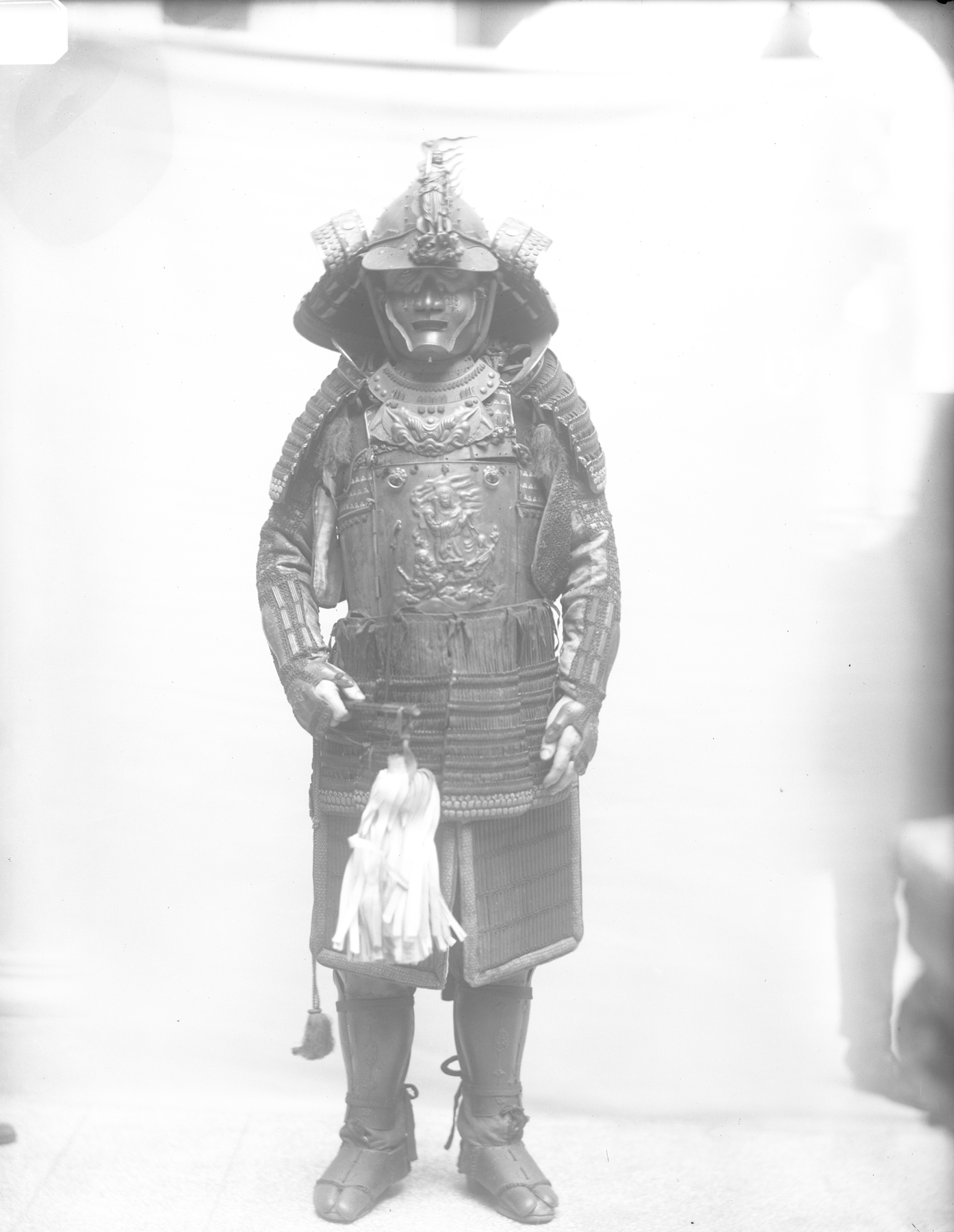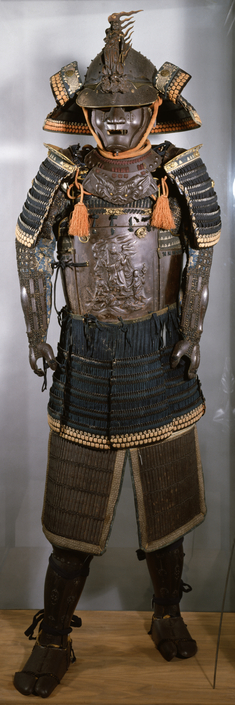Suit of Armor with the Buddhist Deity Fudo Myo-o
(Japanese Military Armor)
Perhaps the most potent expression of military authority in Japan was the armor of the samurai. A suit of armor such as this set provided both protection in battle and symbolic displays of identity, strength, and power. This suit of armor was probably never worn in battle since it was made during the relatively peaceful Edo period (1615–1868). It was probably used for ceremonies or displays.
The Buddhist deity Fudō Myōō is depicted on the armor’s breastplate and helmet. Fudō Myōō, whose name means “the immovable one,” is believed to protect true followers of Buddhism from evil forces. His attributes are rich with symbols of conquest: the sword, the rope, and the halo of swirling fire each have powers, respectively, to cut through delusions, bind evildoers, and burn down obstacles on the path to enlightenment.
Inscription
Provenance
Provenance (from the French provenir, 'to come from/forth') is the chronology of the ownership, custody, or location of a historical object. Learn more about provenance at the Walters.
Bunkio Matsuki Sale, 1906, no. 263; Henry Walters, Baltimore, 1906, by purchase; Walters Art Museum, 1931, by bequest.
Exhibitions
| 2014-2016 | From Rye to Raphael: The Walters Story. The Walters Art Museum, Baltimore. |
Conservation
| Date | Description | Narrative |
|---|---|---|
| 4/1/1975 | Treatment | repaired; cleaned |
Geographies
Japan (Place of Origin)
Measurements
66 3/4 in. (169.55 cm) approx.
Credit Line
Acquired by Henry Walters, 1906
Accession Number
In libraries, galleries, museums, and archives, an accession number is a unique identifier assigned to each object in the collection.
In libraries, galleries, museums, and archives, an accession number is a unique identifier assigned to each object in the collection.
51.602





